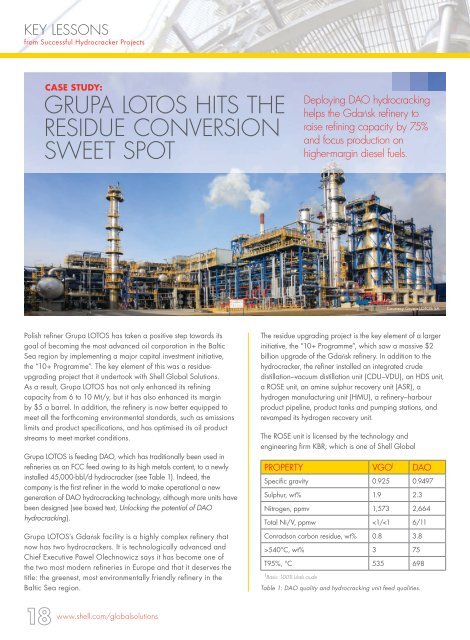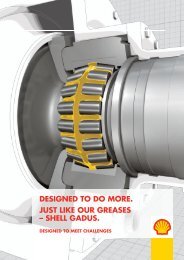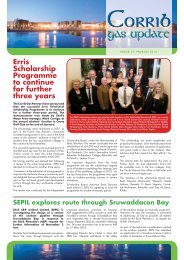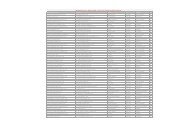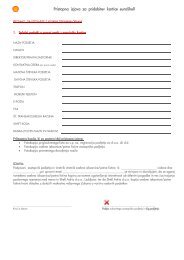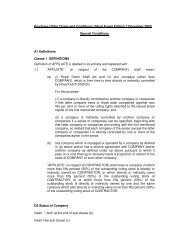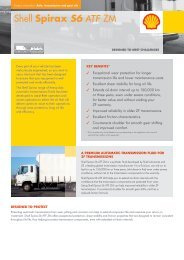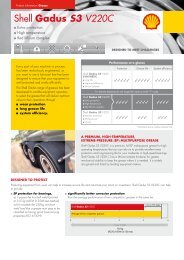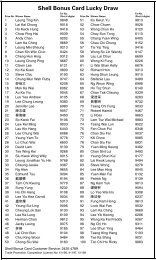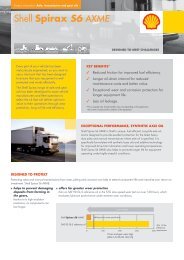KEY LESSONS FROM SUCCESSFUL HYDROCRACKER PROJECTS
KEY LESSONS FROM SUCCESSFUL HYDROCRACKER PROJECTS
KEY LESSONS FROM SUCCESSFUL HYDROCRACKER PROJECTS
- No tags were found...
Create successful ePaper yourself
Turn your PDF publications into a flip-book with our unique Google optimized e-Paper software.
<strong>KEY</strong> <strong>LESSONS</strong><br />
from Successful Hydrocracker Projects<br />
CASE STUDY:<br />
GRUPA LOTOS HITS THE<br />
RESIDUE CONVERSION<br />
SWEET SPOT<br />
Deploying DAO hydrocracking<br />
helps the Gdańsk refinery to<br />
raise refining capacity by 75%<br />
and focus production on<br />
higher-margin diesel fuels.<br />
Courtesy Grupa LOTOS SA<br />
Polish refiner Grupa LOTOS has taken a positive step towards its<br />
goal of becoming the most advanced oil corporation in the Baltic<br />
Sea region by implementing a major capital investment initiative,<br />
the “10+ Programme”. The key element of this was a residueupgrading<br />
project that it undertook with Shell Global Solutions.<br />
As a result, Grupa LOTOS has not only enhanced its refining<br />
capacity from 6 to 10 Mt/y, but it has also enhanced its margin<br />
by $5 a barrel. In addition, the refinery is now better equipped to<br />
meet all the forthcoming environmental standards, such as emissions<br />
limits and product specifications, and has optimised its oil product<br />
streams to meet market conditions.<br />
Grupa LOTOS is feeding DAO, which has traditionally been used in<br />
refineries as an FCC feed owing to its high metals content, to a newly<br />
installed 45,000-bbl/d hydrocracker (see Table 1). Indeed, the<br />
company is the first refiner in the world to make operational a new<br />
generation of DAO hydrocracking technology, although more units have<br />
been designed (see boxed text, Unlocking the potential of DAO<br />
hydrocracking).<br />
Grupa LOTOS’s Gdańsk facility is a highly complex refinery that<br />
now has two hydrocrackers. It is technologically advanced and<br />
Chief Executive Pawel Olechnowicz says it has become one of<br />
the two most modern refineries in Europe and that it deserves the<br />
title: the greenest, most environmentally friendly refinery in the<br />
Baltic Sea region.<br />
The residue upgrading project is the key element of a larger<br />
initiative, the “10+ Programme”, which saw a massive $2<br />
billion upgrade of the Gdańsk refinery. In addition to the<br />
hydrocracker, the refiner installed an integrated crude<br />
distillation–vacuum distillation unit (CDU–VDU), an HDS unit,<br />
a ROSE unit, an amine sulphur recovery unit (ASR), a<br />
hydrogen manufacturing unit (HMU), a refinery–harbour<br />
product pipeline, product tanks and pumping stations, and<br />
revamped its hydrogen recovery unit.<br />
The ROSE unit is licensed by the technology and<br />
engineering firm KBR, which is one of Shell Global<br />
PROPERTY VGO 1 DAO<br />
Specific gravity 0.925 0.9497<br />
Sulphur, wt% 1.9 2.3<br />
Nitrogen, ppmv 1,573 2,664<br />
Total Ni/V, ppmw


